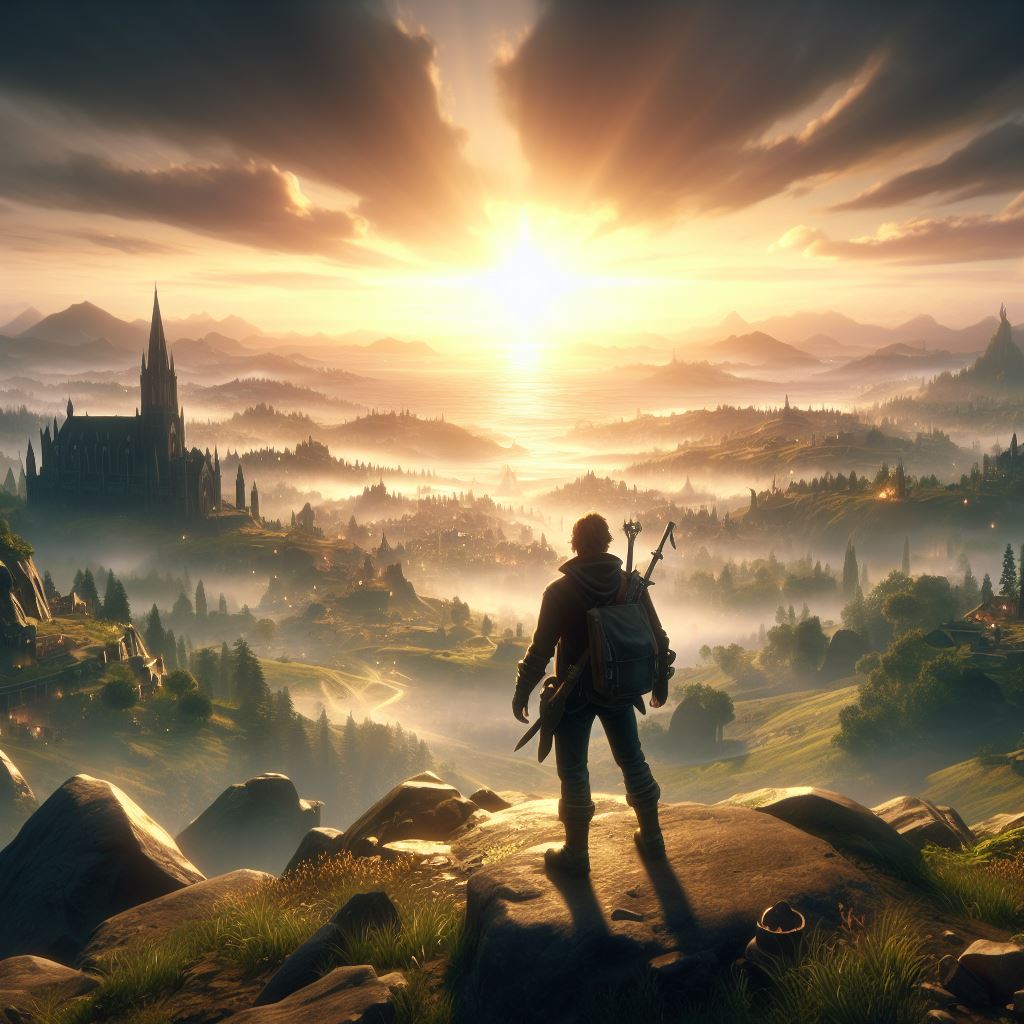Video games have been traditionally divided between single-player and multiplayer games. The first game—Tennis for Two, essentially a precursor to Pong—was indeed a 2-player affair. But some of the most famous games of the formative years of gaming—Super Mario, Legend of Zelda, Final Fantasy, etc.—were adventures coded for one, or sometimes with players taking turns. In modern gaming, most titles fall into one camp or the other, with some games like Call of Duty offering both options: but as completely separate modes, that share most of their art assets but play with very different gameplay rules.
Some of the divide has to do with fundamental game design differences. Single-player campaigns only have to cater to one player, so they can afford to take things at varied pace; elaborate gameplay systems, long cut scenes, and lengthy play sessions are associated mostly with this type of game. On the other hand, multiplayer titles by definition need to deal with multiple players at the same time, so their focus is on immediate engagement, tools for communication1, and tight gameplay loops allowing for the unpredictability of players to create new experiences every time.
For the past two decades, the gaming industry invested heavily in multiplayer titles, coinciding with broader high-speed internet access. Sure, we hauled our PCs to friends’ basements for Starcraft LAN parties back in the day, but once home internet bandwidth was fast enough and the latency low enough, particularly with the advent of consoles leaning into online capabilities, competitive shooters and strategy games and MMORPGs dominated playtime. Even now, some of the biggest games in the world are Fortnite and League of Legends, infinitely replayable which in turn enables their developers to give away the base game for free.
But, the tide seems to be shifting a bit back towards prestige single-player titles, especially those big-budget titles that take 30+ hours to play through and take half a decade or more to create. Elden Ring; God of War; Zelda: Breath of the Wild; Baldur’s Gate 32. The recent trailer for the much-anticipated GTA 6 focused entirely on the setting and story in its single-player mode, despite the decade-long success of its predecessor, GTA 5’s online sandbox.
Chalk up some of this trend to prestige. Even after eclipsing the television and movie industries in total revenue many times over, the video game industry still feels like a little brother emulating his older one: video game award shows feel like the Oscars, game trailers are edited to follow movie trailer formats, and Hollywood celebrities are often employed to hype up gaming announcements. To these ends, many aspects of game-making—storytelling, character design, original music, high-fidelity graphics, etc.—have been more prevalent in epic, single-player adventures. Looking at the industry’s self-recognition and congratulation via something like The Game Awards Game of the Year winners, 8 of the 10 recipients thus far fall squarely into this category.
On the flip side, for multiplayer titles, there’s a player base and community factor that’s necessary to reach critical mass. Games like Fortnite and League of Legends have risen the bar for cultivating and engaging an active player base, but that in turn sucks the oxygen out of the room for everyone else. Not only have they outcompeted their primary alternatives3, but their continued popularity starves any new games in the genre of player attention. It’s so difficult now to break through as a multiplayer shooter or strategy game, and the handful that try every year introduce gimmicks that, at least for the past few years, have not translated into gameplay stickiness.
Of course, these trends come and go and we might be peaking in grandiose video game development—analogous to the coming and now going of the Golden Age of Streaming Television. Big-budget budget, AAA titles continue to cost more and take longer, but there’s psychological resistance to raising prices so every major launch is a risky investment that requires millions in sales to break even4. There are also mobile and VR as competing platforms, and plenty of indie games that appeal to their player niches and compete for time.
So while it lasts, I’m going to enjoy this renaissance in solo gaming.
Mostly voice and text chat, sometimes limited emotes…though once in a while something like Journey shows how communication can happen without any of these features.↩
Though to be fair BG3 does support local and online multiplayer.↩
PUBG and DotA 2, respectively.↩
Publishers have been hedging for years by primarily greenlighting sequels and known quantities.↩




